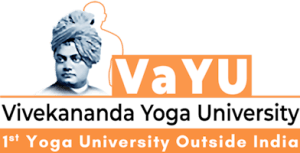
Universal Health Coverage Day (UHC Day), observed annually on December 12, emphasises the importance of ensuring everyone, everywhere, has access to quality healthcare without financial hardship. Established by the United Nations in 2017, it highlights the critical goal of Universal Health Coverage (UHC) as part of the Sustainable Development Goals. UHC Day underscores health as a fundamental human right and advocates for resilient healthcare systems that protect individuals from catastrophic medical expenses. It is a call to action for policymakers, organizations, and communities to invest in equitable health systems, ensuring healthier populations and fostering global stability and economic growth.
Approximately 68% of the global population has access to essential health services, reflecting progress toward Universal Health Coverage (UHC), but significant disparities persist. Low-income countries and marginalized groups face critical challenges in accessing healthcare, and millions are driven into poverty annually due to catastrophic health expenditures. Achieving UHC requires strengthening health systems, ensuring equitable service availability, and reducing out-of-pocket costs, which remain barriers to achieving health equity and financial protection worldwide (World Health Organization, 2024; Our World in Data, 2024).
In this context, it is useful to reflect on the maxim that ‘prevention is the best form of cure’. Among the various lifestyle choices that aid in prevention, one of the best and the most enduring is the practice of Yoga. Its holistic approach addresses physical, mental, and emotional health, reducing the risk of chronic diseases and enhancing overall well-being. Yogic practices such as asanas, pranayama, and dhyana improve physical and mental wellness, stress resilience, and foster a healthier population with reduced dependency on expensive medical interventions. Additionally, yoga’s adaptability to diverse populations and minimal resource requirements make it an inclusive and cost-effective tool, aligning perfectly with UHC’s vision of equitable, universal access to healthcare.

We present below a simple yoga routine that can be practiced by most people. Please check with your doctor or a qualified yoga teacher if you have injuries or other health issues :
Simple but Highly affecting Yoga Routine –
- Breathing Practices (Pranayama):
- Diaphragmatic Breathing (Deep Breathing): Improves lung capacity and calms the nervous system.
- Alternate Nostril Breathing (Nadi Shodhana): Balances energy and enhances mental clarity.
- Gentle Warm-Up Movements:
- Neck Rolls: To relieve tension in the neck and shoulders.
- Joint Rotations: For wrists, ankles, and shoulders to improve mobility.
- Simple Asanas (Postures):
- Mountain Pose (Tadasana): Improves posture and stability.
- Tree Pose (Vrikshasana): Enhances balance and concentration.
- Cobra Pose (Bhujangasana): Strengthens the spine and opens the chest, but avoids in cases of severe back pain.
- Easy Sitting Pose (Sukhasana) : Provides comfort for meditation and breathwork.
- Relaxation:
- Corpse Pose (Shavasana): Encourages deep relaxation and stress relief.
- Meditation:
- A short guided meditation or mindfulness practice to promote mental well-being.
- Affirmation or Chanting:
- Simple chants like “Om” or affirmations for health and harmony can enhance the holistic benefits.
The vision of Universal Health Coverage (UHC) can be greatly enhanced by incorporating practices like yoga, which not only supports physical health but also nurtures mental and emotional well-being. Emphasizing prevention empowers individuals to take responsibility for their own health. By integrating such preventative practices into the public health system, we can promote resilience, reduce dependency on expensive medical treatments, and make wellness accessible to all. At Vivekananda Yoga University, we are committed to empowering communities to take charge of their health and well-being. We invite you to join our efforts in creating a healthier, more equitable world through the transformative power of yoga.
References
- World Health Organization. (2024). Universal Health Coverage Service Coverage Index. Retrieved from https://www.who.int Our World in Data. (2024).
- The Universal Health Coverage (UHC) Service Coverage Index. Retrieved from https://ourworldindata.org
- Note – The Universal Yoga Protocol, named and structured by Vivekananda Yoga University (VaYU), is derived from its coursework, carefully designed with a focus on the contraindications and limitations of yoga practices. This protocol ensures accessibility and safety for individuals across diverse age groups and health conditions while upholding the principles of therapeutic and preventive healthcare through yoga.
